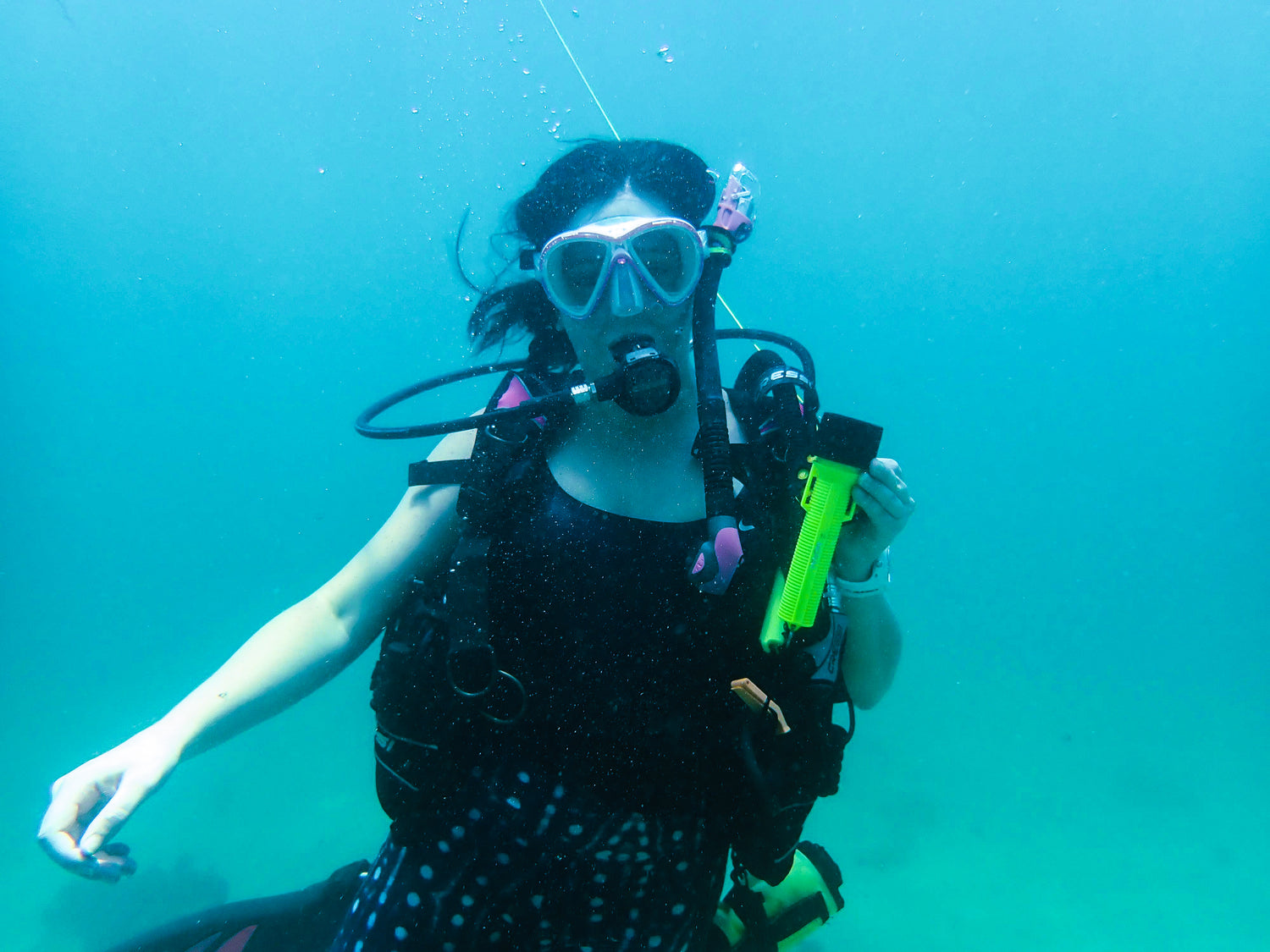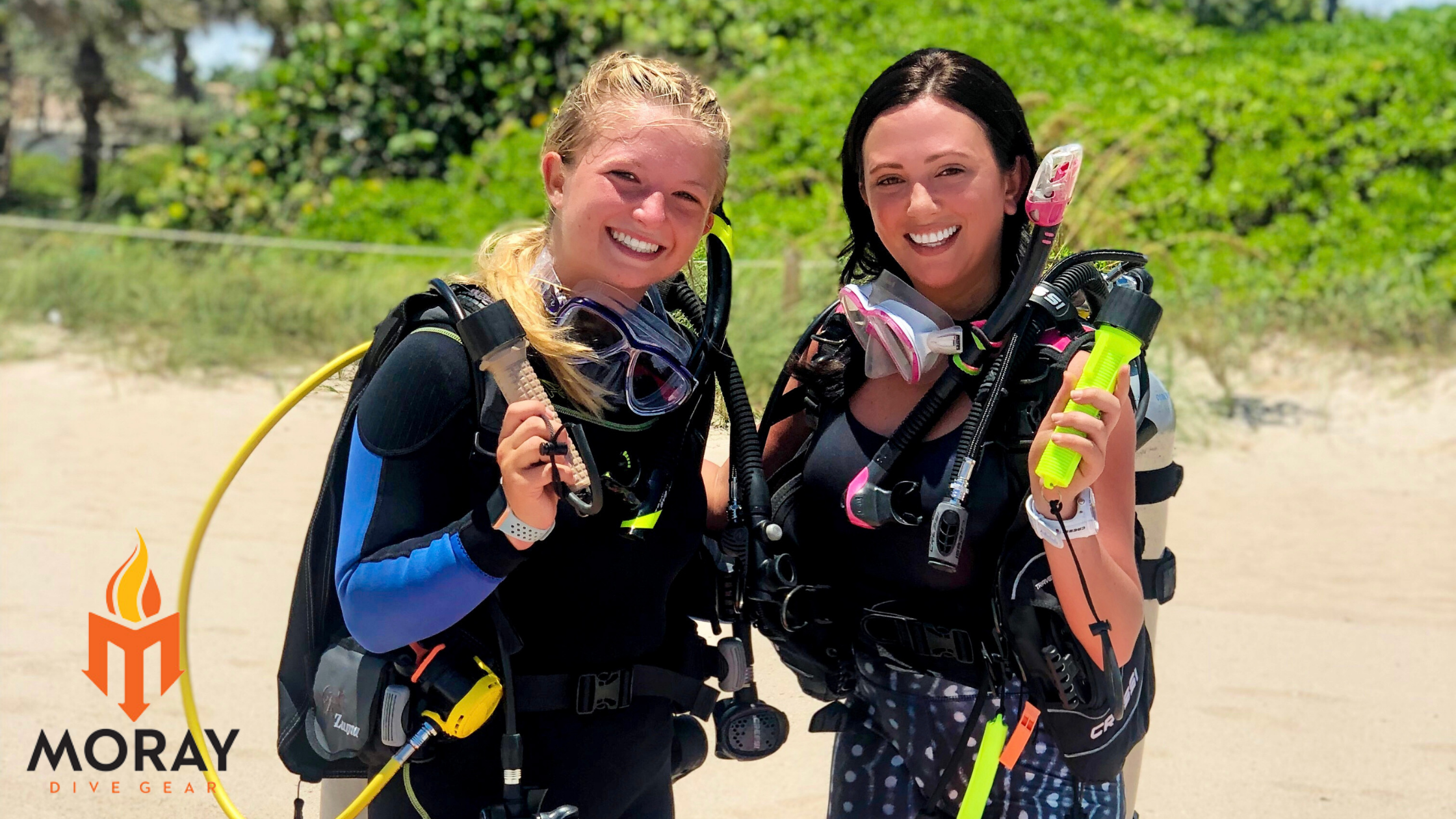Scuba diving can be a fun and adventurous sport that takes you all over the world, and lets you meet many different people. Unless you have a self-reliant certification, dive buddies are required as a general rule of thumb by any certifying agency and for good reason. Safety and communication are very important underwater. Let’s have a look at why you need a dive buddy, easy ways to communicate, and necessary tools to create an amazing, shared experiences.
Why You Need a Dive Buddy
The buddy system ensures your safety as a scuba diver. You are both responsible for each other during the dive, which means you must look out for each other if anything goes askew on a dive.
Especially in recreation diving, or diving with a single cylinder, you act as a redundancy air source for your buddy, meaning that if either one of you runs out of air, you will share the other person’s air until you can safely complete your dive and get to the surface.
Communicating with Your Buddy
Unless you and your dive buddy have expensive full-face masks with a comms system, underwater communication can be difficult. With limited line of sight from your mask, and unpredictable currents keeping you from getting close enough to write each other love notes on a slate, you definitely need a more effective tool for communication.
Although hand signals are a universal tool used across the dive world, the problem is that your dive buddy isn’t always going to be looking in your direction if you need their attention. If you need to point out a nurse shark or a problem you need help with, such as a lose tank strap, you need to be able to get their attention.
Tools for Great Underwater Communication
Before your first dive, and especially if you have a new dive buddy, you may want to establish how to get each other’s attention if necessary while you’re still on the surface. It’s a good idea to decide what your signals will be during your buddy check, that way as buddies you’ll both be aware of what your ‘call sign’ will be and are far more likely to get a quick response than a wild and frantic response, increasing your chances for disaster.
Two great communication tools are an underwater torch or light and a noisemaker, such as a shaker or rattle. Let’s look at the different types of tools.
Torch
A torch is a tool that works well if your buddy is swimming parallel to you. You can use your torch to either shine the beam in their line of sight to draw their attention or alternatively flash it across the side of their mask. Most people’s eyes are drawn to light and movement so they should spot it quickly.
This method won't work if your buddy has their back to you and torch light is obviously less visible in bright conditions, but it is always worth a go in an emergency.
Noise Makers, Shaker or Rattle
Products have been developed to aide underwater communication, which involve a distinguishable ‘shaking’ or ‘rattling’ noise. The advantage of using sound is that you'll be able to attract the attention of a whole group or other divers nearby rather than just one person.
Shakers tend to be more convenient to operate than a tank banger and can produce a continuous noise for as long as you can continue shaking it.
Your Solution :

Moray Dive Gear introduces…The Moray DCT - Diver's Communication Torch - a powerful dive light with a built-in noisemaker!
This is one of the best dive lights for scuba divers at this price. A tough no-nonsense bright Tektite-powered dive light paired with Moray Dive Gear's patented noisemaker. Building off the Moray Dive Gear's revolutionary noisemaker design, the Diver's Communication Torch (DCT) eliminates cumbersome underwater communications! The DCT incorporates a state-of-the-art LED/optic to produce 240 + source lumens of light.
It's simple and intuitive design makes it super easy to use. To turn on and off, simply twist it. To use the noisemaker, just hold the light from the top from the rubber glare guard and snap it down. You will hear a “clack” sound as the ball is released. To get your buddy’s attention, just shake it! When you don’t need to use the noisemaker, tilt the light downwards to reset the ball against the magnet.





Leave a comment
This site is protected by reCAPTCHA and the Google Privacy Policy and Terms of Service apply.